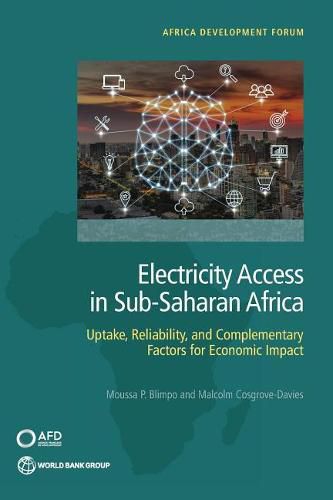Readings Newsletter
Become a Readings Member to make your shopping experience even easier.
Sign in or sign up for free!
You’re not far away from qualifying for FREE standard shipping within Australia
You’ve qualified for FREE standard shipping within Australia
The cart is loading…






Access to reliable electricity is a prerequisite for the economic transformation of economies in Sub-Saharan Africa (SSA), especially in a digital age. Yet the electricity access rate in the region is often substantially low, households and businesses with access often face unreliable service, and the cost of the service is often among the highest in the world. This situation imposes substantial constraints on economic activities, provision of public services, adoption of new technologies, and quality of life. Much of the focus on how to best provide reliable, affordable, and sustainable electricity service to all has been on mitigating supply-side constraints. However, demand-side constraints may be as important, if not more important. On the supply side, inadequate investments in maintenance result in high technical losses; most state-owned utilities operate at a loss; and power trade, which could significantly lower the cost of electricity, is underdeveloped. On the demand side, the uptake and willingness to pay are often low in many communities, and the consumption levels of those who are connected are limited. Increased uptake and consumption of electricity will encourage investment to improve service reliability and close the access gap. Electricity Access in Sub-Saharan Africa shows that the fundamental problem is poverty and lack of economic opportunities rather than power. The solution lies in understanding that the overarching reasons for the unrealized potential involve tightly intertwined technical, financial, political, and geographic factors. The ultimate goal is to enable households and businesses to gain access to electricity and afford its use, and utilities to recover their cost and make profits. The report makes the case that policy makers need to adopt a more comprehensive and long-term approach to electrification in the region - one centered on the productive use of electricity at affordable rates. Such an approach includes increased public and private investment in infrastructure, expanded access to credit for new businesses, improved access to markets, and additional skills development to translate the potential of expanded and reliable electricity access into substantial economic impact. Enhancing the economic capabilities of communities is the best way to achieve faster and more sustainable development progress while addressing the broad challenges of affordability, low consumption, and financial viability of utilities, as well as ensuring equitable provision between urban and rural areas.
$9.00 standard shipping within Australia
FREE standard shipping within Australia for orders over $100.00
Express & International shipping calculated at checkout
Access to reliable electricity is a prerequisite for the economic transformation of economies in Sub-Saharan Africa (SSA), especially in a digital age. Yet the electricity access rate in the region is often substantially low, households and businesses with access often face unreliable service, and the cost of the service is often among the highest in the world. This situation imposes substantial constraints on economic activities, provision of public services, adoption of new technologies, and quality of life. Much of the focus on how to best provide reliable, affordable, and sustainable electricity service to all has been on mitigating supply-side constraints. However, demand-side constraints may be as important, if not more important. On the supply side, inadequate investments in maintenance result in high technical losses; most state-owned utilities operate at a loss; and power trade, which could significantly lower the cost of electricity, is underdeveloped. On the demand side, the uptake and willingness to pay are often low in many communities, and the consumption levels of those who are connected are limited. Increased uptake and consumption of electricity will encourage investment to improve service reliability and close the access gap. Electricity Access in Sub-Saharan Africa shows that the fundamental problem is poverty and lack of economic opportunities rather than power. The solution lies in understanding that the overarching reasons for the unrealized potential involve tightly intertwined technical, financial, political, and geographic factors. The ultimate goal is to enable households and businesses to gain access to electricity and afford its use, and utilities to recover their cost and make profits. The report makes the case that policy makers need to adopt a more comprehensive and long-term approach to electrification in the region - one centered on the productive use of electricity at affordable rates. Such an approach includes increased public and private investment in infrastructure, expanded access to credit for new businesses, improved access to markets, and additional skills development to translate the potential of expanded and reliable electricity access into substantial economic impact. Enhancing the economic capabilities of communities is the best way to achieve faster and more sustainable development progress while addressing the broad challenges of affordability, low consumption, and financial viability of utilities, as well as ensuring equitable provision between urban and rural areas.